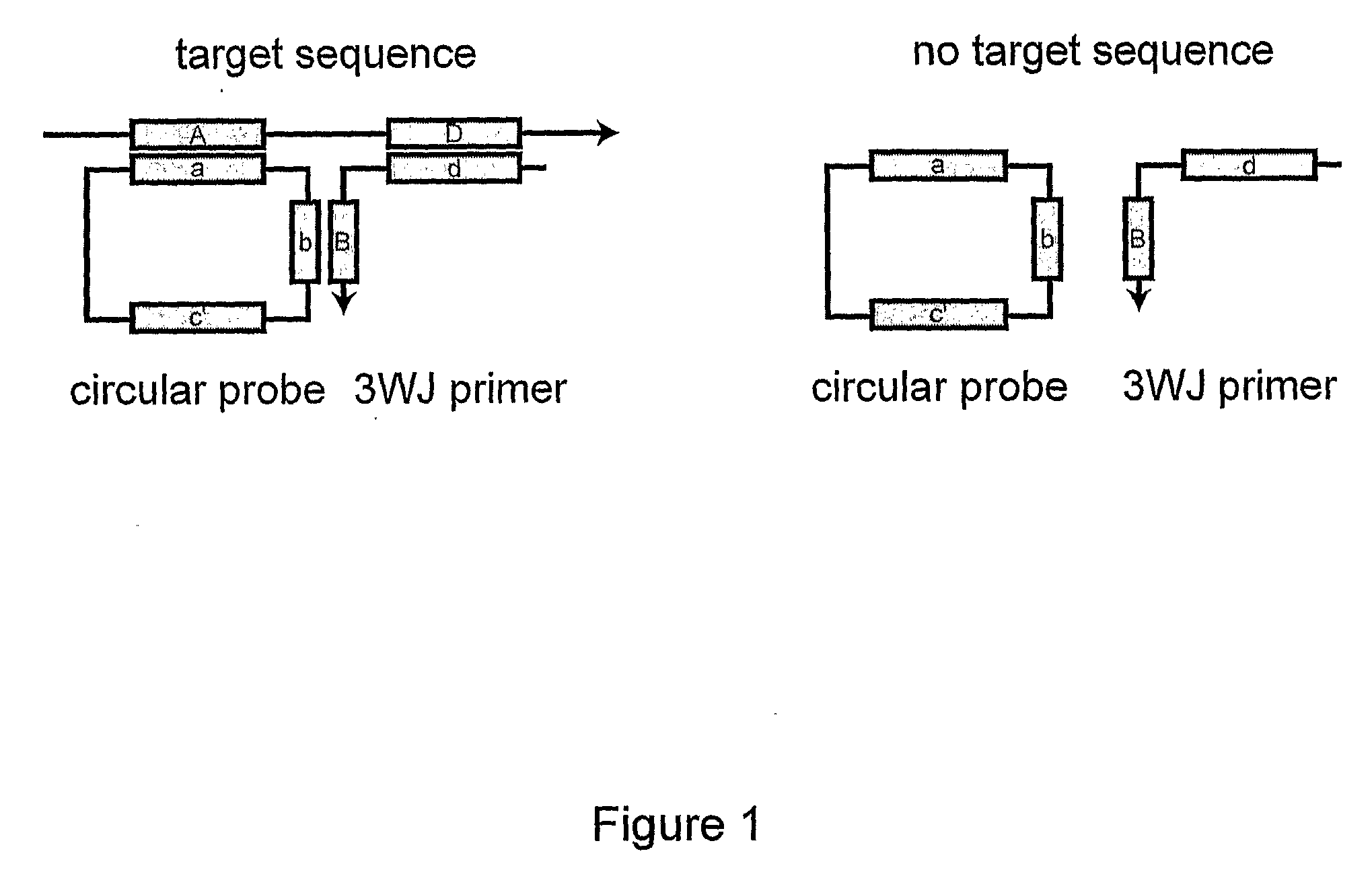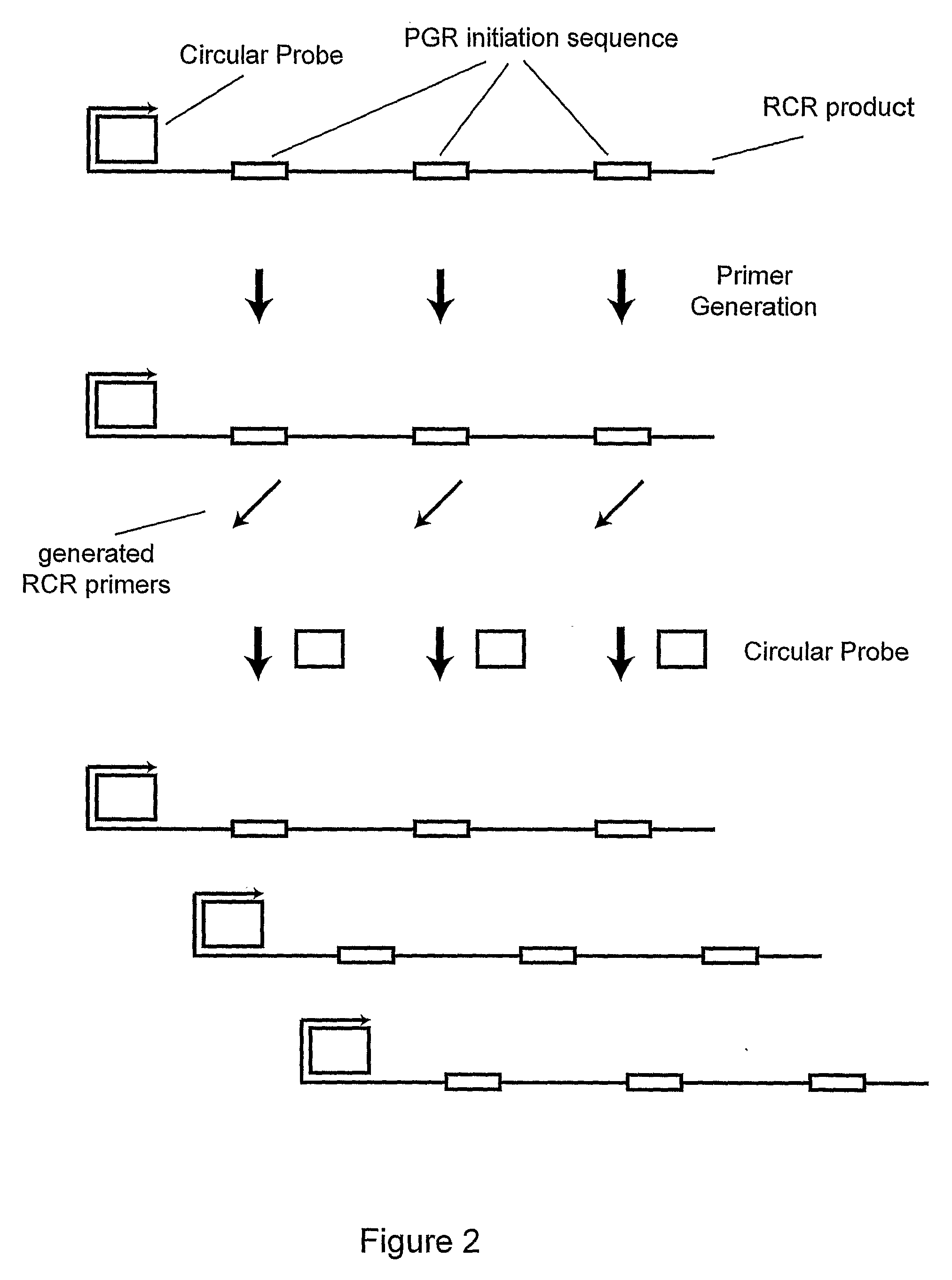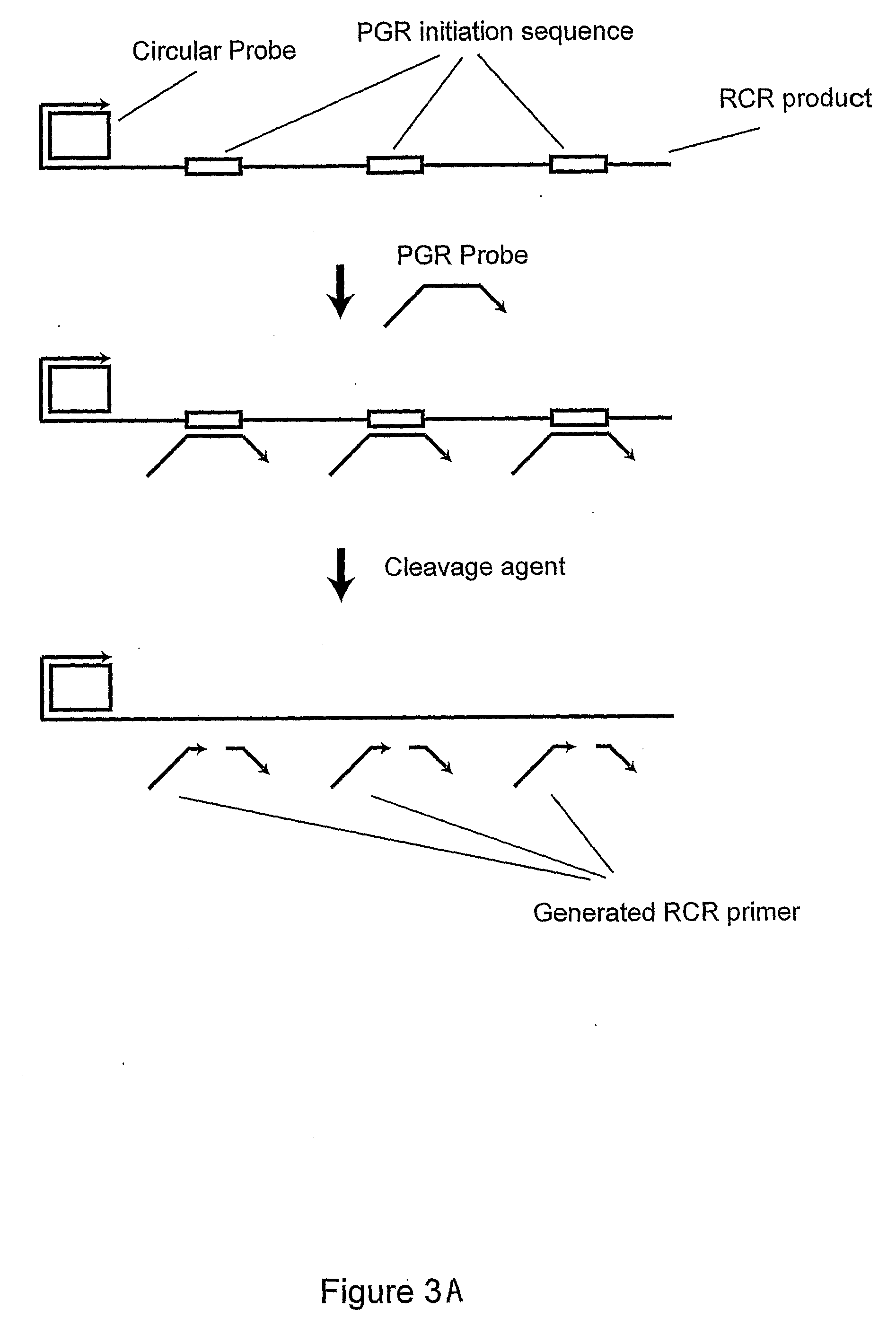Primer generation rolling circle amplification
a technology of primer generation and rolling circle, which is applied in the field of primer generation rolling circle amplification, can solve the problems of inability to directly detect rna targets in many of these amplification methods, and the efficiency of dna ligase-based ligation on an rna template is known to be less efficien
- Summary
- Abstract
- Description
- Claims
- Application Information
AI Technical Summary
Benefits of technology
Problems solved by technology
Method used
Image
Examples
example 1
Synthesis of a Circular Probe
[0062]A linear nucleic acid probe (SEQ ID NO:1) was purchased from Integrated DNA Technologies (Coralville, Iowa). A circular probe was synthesized from this linear probe using Circligase from Epicentre (Madison, Wis.) following the manufacturer's protocol. After circularization, uncircularized probes were removed by exonuclease I (Epicentre, Madison, Wis.)) and exonuclease III (New England Biolabs, Ipswich, Mass.) treatment at 37° C. overnight following G25 spin column punctuation (Amersham Biosciences, Piscataway, N.J.). Alternatively, a circular probe was purified by 7M Urea-5% polyacrylamide gel electrophoresis and following exonuclease I and III treatment.
SEQ ID NO:1 / 5phos / tgcgacgaccgttgcgggcagtgatctccttctgcatcctgtcgagtgatgtattcggtgtcccagccgcagtgaa
example 2
RCR Reaction from 3-Way Junction Structure
[0063]A circularizable probe (SEQ ID NO:2), 3WJ primer (SEQ ID NO:3) and target DNA (SEQ ID NO:4) were obtained from Integrated DNA Technologies. Bst DNA polymerase large fragment was purchased from New England Biolabs. A circular probe was synthesized as shown in Example 1 except using a circularizable probe with a different sequence.
[0064]3WJ-RCA was performed using 4 μM circular probe and 500 nM 3WJ primer as a 3WJ primer with or without 500 nM target DNA. The 3WJ primer was designed to form two unpaired thymidines in a 3WJ structure comprising the C-probe, the 3WJ primer and the target. The reaction was performed in a 10 III buffer comprising 400 μM dNTP (Promega), 1× Themopol reaction buffer (New England Biolabs), and 0.08 U / μl Vent (exo-) DNA polymerase (New England Biolabs), at 69° C. for 65 hours after 3-min denaturation at 94° C.
[0065]The reaction products were analyzed by PCR and a subsequent 1.5% agarose gel analysis. Concatenated...
example 3
PG-RCA Using Nuclease-Based Cleavage Reaction
[0066]A PGR Probe (SEQ ID NO:7), circularizable probe (SEQ ID NO:8) and nucleic acid sequence of interest (SEQ ID NO:9) were obtained from Integrated DNA Technologies. Bst DNA polymerase large fragment was purchased from New England Biolabs and Thermo stable RNaseH was from Epicentre. A circular probe was synthesized as shown in Example 1 except using a circularizable probe with a different sequence.
[0067]PG-RCA was performed at 65° C. for 1 hour in a 10 μl reaction with the following components: 400 μM dNTP, 500 nM PGR probe, 10 μM circular probe, 1× Thermopoly Buffer (New England Biolabs), 1 / 125000 diluted SybrGreen I (Invitrogen, Carlsbad, Calif.), 0.3 U Thermostable RNaseH and 0.8 U Bst DNA polymerase large fragment. The reaction was monitored in a real-time manner by increase of fluorescent intensities on iCycler (Biorad Laboratories, Hercules, Calif.) and analyzed on agarose gel with SybrGold (Invitrogen) staining. An increase in fl...
PUM
 Login to View More
Login to View More Abstract
Description
Claims
Application Information
 Login to View More
Login to View More - R&D
- Intellectual Property
- Life Sciences
- Materials
- Tech Scout
- Unparalleled Data Quality
- Higher Quality Content
- 60% Fewer Hallucinations
Browse by: Latest US Patents, China's latest patents, Technical Efficacy Thesaurus, Application Domain, Technology Topic, Popular Technical Reports.
© 2025 PatSnap. All rights reserved.Legal|Privacy policy|Modern Slavery Act Transparency Statement|Sitemap|About US| Contact US: help@patsnap.com



